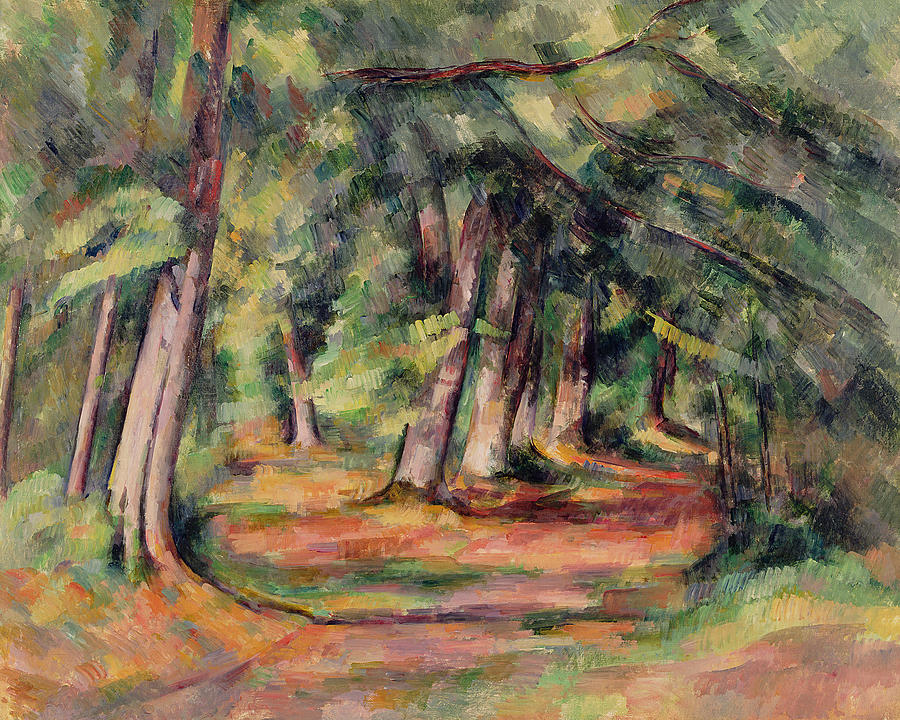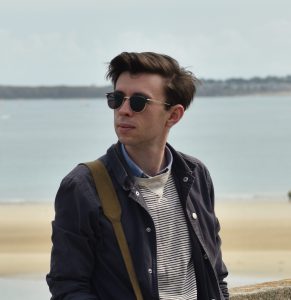Open any general survey of the art of the twentieth century and you’ll find him right there at the beginning. The Jesse at the root of the modernist tree, it all comes back to Cezanne. Without him there’s no cubism, there’s no fauvism, then there’s no expressionism or futurism. For Picasso, Cezanne was a “mother hovering over” his work, for Matisse he was “father to us all”. Having been posthumously made both matriarch and patriarch of all modern art, it has become hard to understand Cezanne in his own terms, to strip away the retrospective epitaphs and mythos in order to discover the old man in the big Provencal house who painted only for himself. The Cezanne of those hesitant, sketchy, sun baked landscapes and quietly rotting still lives, so unassuming, yet so revolutionary.

Born and dying in Aix-en-Provence, only leaving for brief stints in Paris in the 1860s and 70s, in his old age Cezanne retreated to his family estate on the edge of the city, the Jas de Bouffan. This comfortable lifestyle was thanks to his father’s career as a successful provincial banker, and other than an initial encouragement for his son to become a lawyer, Cezanne senior supported his son’s artistic pursuits and left him a healthy inheritance, on which he would relay for the rest of his life. This financial cushion gave him freedom from the whims of the art market and allowed him to experiment and explore in his work however he desired.
Although initially influenced by the Impressionists, indeed exhibiting in several of their shows and developing a close friendship with Camille Pissaro, Cezanne would develop their thinking further in order not just to capture the fleeting and transient moment but also the way in which the viewer sees it. He was concerned with vision and how we perceive the world around us. There’s no photo-realism here, but rather the ambiguity, hesitancy, and doubt with which we truly see and feel our environment. His landscapes are made from layer after layer of rough brushstrokes, building up texture and tone until the sensation of a tree, a building, or a mountain appears.
That being said, there was no grand philosophy behind Cezanne’s works, no manifesto or call to arms – all that has been applied by those who came after. The concepts of relative and subjective vision were increasingly current towards the very end of the nineteenth century, whether that be in the work of Alfred North Whitehead or later in philosophy of Henri Bergson and Albert Einstein’s theories of relativity. However, for those outside of the scientific and philosophical community these ideas were virtually unknown, yet Cezanne, isolated from this discourse in the very south of France was exploring this phenomenon in oils, on canvas, simply because it was what came naturally to him.

Breezes rush through Cezanne’s treetops because they’re never in one place. He knew that we see in motion, there is no stasis in vision, either what we see moves, we move ourselves, or both. Even the stillest and calmest views are full of movement, clouds passing, light changing, the flicking movement of our eyes around the vista. The challenge Cezanne faced with how to reflect this on a static surface with sicking, unmoving, paint.

Famously, the still lives he would set up in his studio, collections of apples, oranges, ornaments and fabrics, would slowly rot as he took weeks to painstakingly study them and transfer what he saw onto the canvas. The closeness of the outlines combined with the meticulous building up of tones and hues, layer upon layer, in the smallest brush strokes, results in an almost tangible solidity. They are some of the most believable fruits in art, not because they are perfect, illusionary, reproductions, Cezanne wasn’t interested in that, but because they are depictions of how we see these objects, the infinite tones in the skin of an apple, the rough texture of a pear’s skin, the understanding that a particular jug is round or that cloth can be unfolded despite these things being unseen in the image. By painting not the objects, but the process of viewing them, Cezanne reconciles the world around us with our tools of perception – truly one of the ultimate goals of art.
He was aware of the power of this method of still life painting, saying “with an apple I will astonish Paris” and “the day is coming when a single carrot, freshly observed, will set off a revolution.”

He returned again and again to the view across the plain below the distant Mont Sainte Victoire, that distinctive summit now known across the world thanks to him. The grey/blue outcrop sits on the horizon and, like a quilt before it lie the trees and rooftops of the valley. I say quilt intentionally, the patterns on his fabrics in the still lives often resemble the way he paints these landscapes. They are reduced to a pattern of motifs, here a quivering cedar branch breaking the canopy, there the yellow cube and pyramid of a house. They are not topographical, you could never draw a map from them, as soon as you try and work out what is woodland, where the village lies, what’s a field and what’s a wall, if that’s a tree drink of a church tower, you get lost in a melange of Provencal colour and texture. In many of his wooded scenes of groves or streams one is left unsure as to where foliage ends and water begins, what is reflection and what is shadow – a Cezanne landscape can be read one way, and then another, in that way they reach a form of poetry.
This style of landscape would be adopted after Cezanne’s death by the young Georges Braque who, along with his close friend Pablo Picasso, would spend the first decades of the twentieth century developing these principles further and further into abstraction, what would become cubism – the revolution that his closely observed carrot had produced was here!

But whether we see cubism as his legacy or not, it should not overshadow the true revolution, albeit at quiet one, that Cezanne himself constituted. By shifting the focus of art from what we see to how we see he discovered new, more immediate ways of showing us the world. Ways that are full of hesitancy and ambiguity and therefore more real that one could hope to find from any other artist of his generation.
